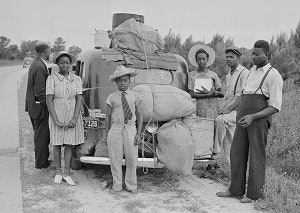NEW YORK—Black Americans’ relationship with the automobile has been checkered.
In the era of Jim Crow and years after, those thousands of pounds of steel represented freedom for the descendants of slaves and sharecroppers as they took breaks from hard work for the nation’s new highways and vacations on the road. But that travel also represented threat, as Black families passed through unfamiliar places and worried about lynchings and the Klan.
Then of course there are the most recent bumps in that relationship between Black people and the car. The automobile has been a significant prop in numerous police traffic stops that have ended in death for Black motorists or passengers like Sandra Bland and Philando Castile.
All this promises to be explored in “Driving While Black,” a documentary in the works by a Cooperstown, N.Y., academic, a longtime documentary maker, The Andrew W. Mellon Foundation and Steeplechase Films scheduled to be shown on PBS next year. During a sneak peek at the first half hour of the film in New York on Friday, Dec. 7, those behind “Driving While Black” said Black family travel in the 1930s through the 1960s was a demonstration of race advancement and civil rights.
“I think one of the things that’s very important is that this is an accessible topic and it’s a way in for people who are not people of color to think about issues of race because of the automobile,” said Dr. Gretchen Sullivan Sorin, director of the Cooperstown Graduate Program in Museum Studies, affiliated with the State University of New York College at Oneonta.
Sorin, who worked on the documentary with the filmmaker Ric Burns, made the comments during a panel discussion after the screening.
“The automobile is such an accessible object — something that everyone knows about and everyone remembers. Everyone remembers going on vacation with their family and stopping at gas stations,” Sorin said. “I’ve found that people are very comfortable talking about the automobile. It gives them a window, a way into talking about very difficult issues in an accessible way.”















